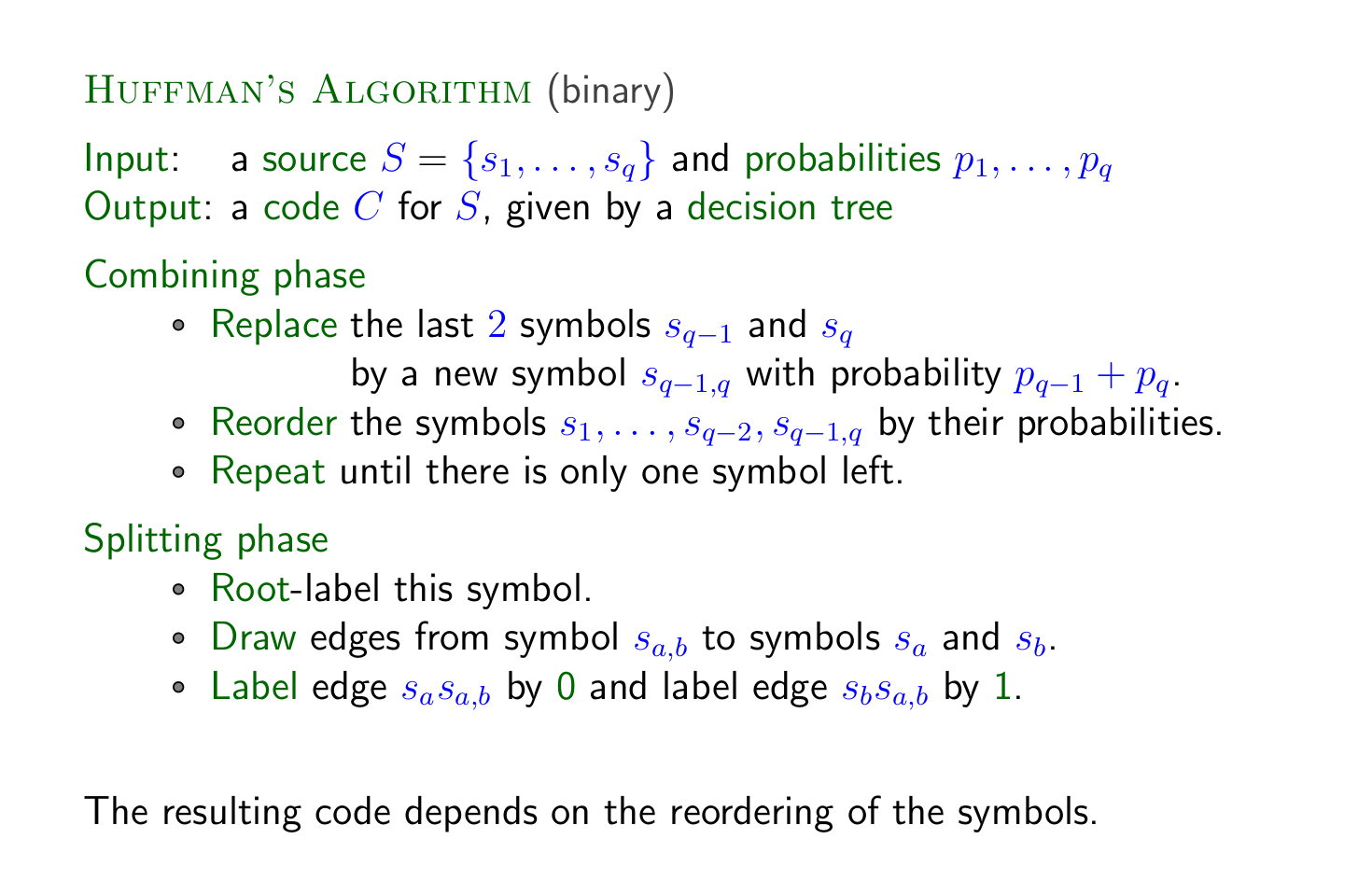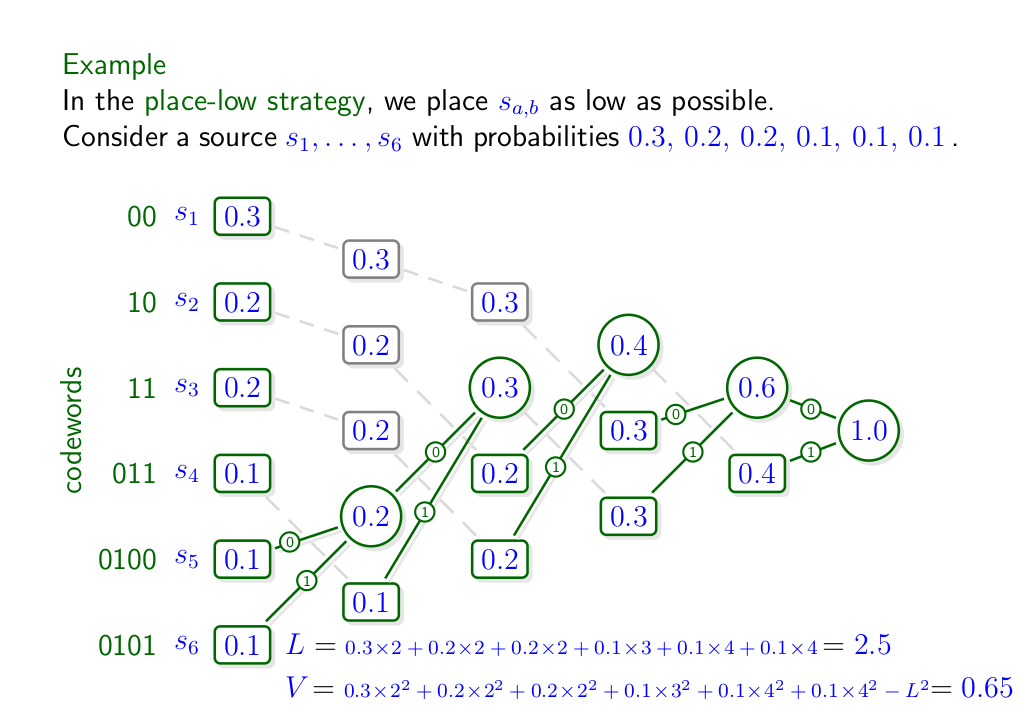Huffman Codes
Contents
Huffman’s Algorithm
The Huffman coding scheme generates the best possible uniquely decodable code.
- All probabilities have to be known before any codeword can be found
There is no formula for the length of the codewords
Need to have
nelements such thatn mod (r-1) === 1

Place-low Strategy
Place $s_{a,b}$ as low as possible
- Combine the two codewords with the lowest probabilities
- Sort the probabilities, placing the combined probability as low as possible
- Repeat
- Then label top-down $0, 1, …, n$
Then trace the tree from the paths

Place-high Strategy
Place $s_{a,b}$ has high as possible.
- Combine the two codewords with the lowest probabilities
- Sort the probabilities, placing the combined probability as high as possible
- Repeat
- Then label top-down $0, 1, …, n$

Average Length
The usual method to calculate the average length is to sum the product of each codeword’s length with its probability.
Knuth’s Theorem
Knuth’s theorem allows us to take a short-cut in finding the average length.
The average codeword length $L$ of each Huffman code is the sum of all child node probabilities / combined nodes